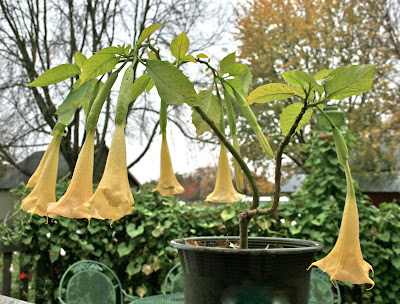When we moved here two years ago our Aussie rescue dogs, Nutmeg and Cocoa, were overjoyed to go from being urban pooches to being farm dogs - with 10 acres to explore, track rabbits and chase squirrels!!
We spent a lot of time, effort and money trying to to keep them in the yard, however. There is a fence around the pasture, encircling about half the perimeter of our farm, but they can squeeze under almost anywhere. We installed wireless fencing around the back yard with radio collars but they endured the shock to go out into the woods after a squirrel - and then were unwilling to come back into the yard. We tried putting up a plastic garden fence with electric wires at the top and bottom, a totally ineffective effort. I guess they have figured out that shocks are only a momentary discomfort.
Finally we just gave up on the dog fencing. They learned the approximate boundaries of our land and never bother the neighbors or their livestock. Most of the time they stay in the yard, responsibly protecting the chickens and watching over the farm. They do cross the gravel road to check on the rabbit situation, however and we worry about cars, but we are apparently poor dog trainers -- Nutmeg, especially, is totally recalcitrant when it comes to rabbits.
We had come to a guilty acceptance of the risk of our dogs crossing the road. But then two weeks ago, our farmer neighbor's son stopped by and mentioned that in order to protect the pheasant population, they were inviting a trapper to trap coyotes in the ditch and the adjacent prairie, so we might want to keep our dogs tied. I asked him what kind of traps? "Snares."I asked him when he would be trapping? "October through March." Six months!
I looked up info on coyote traps and called a trapping supply dealer and learned that the snares are baited, attractive to all canines, and generally fatal to both coyotes and dogs. It sounds like a horrible death -- as the animal struggles to get away, the snare tightens around its neck and strangles it. Even being extremely vigilant, at some point in six months our dogs are going to get out, no doubt. If they smell a good, stinky bait smell, they are going to investigate it. My heart was in my throat. I dearly love these dogs and am sickened by the thought of them getting into one of these traps. (I am also sickened by the thought of a coyote getting into one.)
We brainstormed with all our dog trainer friends - what about a shock collar --not recommended, especially since the electric fence failed to contain them. Could we get some of the coyote bait and do some kind of aversion training with it? Should we build a kennel?
Finally, we decided our best option was to install a metal garden fence around the back yard. Rog was skeptical, but it had worked to keep our dogs out of our garden so I thought it was worth a try. It is affordable (compared to chain link fence) so we could fence in a large area--a size that would be paradise for normal dogs not used to running on 10 acres. Plus it is easy to install and move. We got 350 feet of fencing; by incorporating our buildings, patio fence and cattle gates we could enclose a 100 x 200 foot area.
I spent a sunny afternoon last week pounding in the stakes along the perimeter of the back yard with a sledge hammer and attaching the fencing. My goal was to finish it before Rog came home from work, but I didn't quite make it. My arms and shoulders were very grateful when he got home and took over the last stretch.
We attached garden fencing to the bottom of the cattle gates to deter the dogs from squeezing under. One of our patio gates opens into the dog yard so when we let them out at night or in winter, we can just open the house door and they can access the yard (we know, we are kind of lazy and wimpy.) We still have to figure out a dog -proof closure for the front gate to the patio.
The fence has been up for a week now with significant success. Each time the dogs figure out a way out, we figure out a way to confound them. This weekend we will tackle all the vulnerable-looking spots.
Curiously, Nutmeg and Cocoa somehow seem to have intuited our concern about leaving the property. Although they have gotten out a few times, they have stayed in the yard and have not once attempted to cross the road. We are also working very hard on getting them to respond more obediently by providing lavish praise and tasty treats. They are not very happy about being restricted, as you can see by their expressions in the top photo, but all the extra attention and treats must be some consolation.


















































